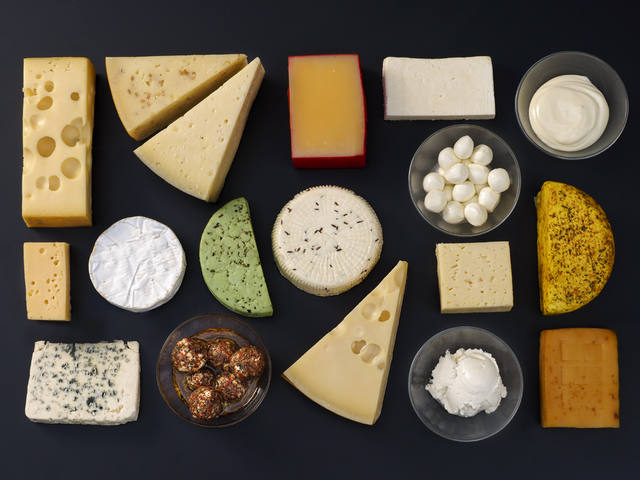
Cheeses in Latvia
Cheeses Made in Latvia
What kinds of cheeses are made in Latvia, and which ones are most popular? Latvia uses the European Union quality schemes “Protected Geographical Indication,” “Protected Designation of Origin,” and “Traditional Specialty Guaranteed.” Traditional Summer Solstice cheese in Latvia is the only one to fit under the latter of those categories, but other excellent cheeses also deserve attention.
Cheeses in Latvia differ ...
In terms of their period of ripening and the environment
There are unripe or fresh cheeses such as Mālpils cheese, Mozzarella, Summer Solstice cheese, Jaunpils feta, Caraway seed cheese, Kazdanga cheese, “White Cottage Cheese” cheese, “Mare,” “Taizelis,” “Suluguni,” etc. They are delivered to stores a few days after they are ready. The taste and aroma are not as rich as is the case with ripe cheeses. Because fresh cheeses must be sold quickly, they are not exported very much. They do have various additives, however, such as herbs, curry, carrots, tomatoes, basil, red pepper, raisins, nuts, etc.
Ripened cheeses are ripened under specific circumstances and for a specific period of time. These include most fresh milk cheeses, including “Grande Duro,” “Olimps,” “Jaunpils Zelta,” cheddar, Russian cheese, Holland cheese, Rīga cheese, Ugliča cheese, Talsi Rolls, “Talsi Cheese of Nine Hills,” “Smiltene MAAZDAMER,” etc.
Cheeses that are ripened without any lactic acid batteries involve special mold in that they are cheeses on the top of which there is white mold (camembert, brie) or pink mold (Bakšteinas cheese, Latvijas cheese), as well as those that have mold inside the cheese itself (bleu cheeses).
Cheeses ripened in salt were common in southern countries in the past, but there has also been demand for them in Latvia for a long time. Such cheeses are ripened in a saline liquid until they have more salt than in other types of cheese. The Jaunpils Dairy, Mālpils Dairy, SIA EDAKS and the Dundaga company produce bryndza, which is of Bulgarian and Romanian origin, but is also tasty in Latvia. “Suluguni” is also a salted cheese.
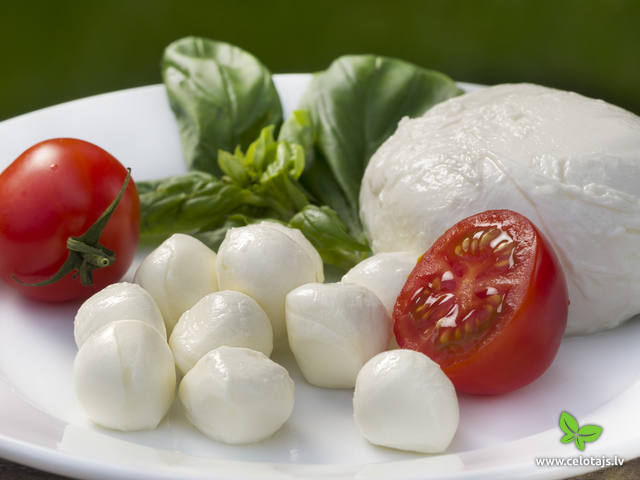
Mozzarella
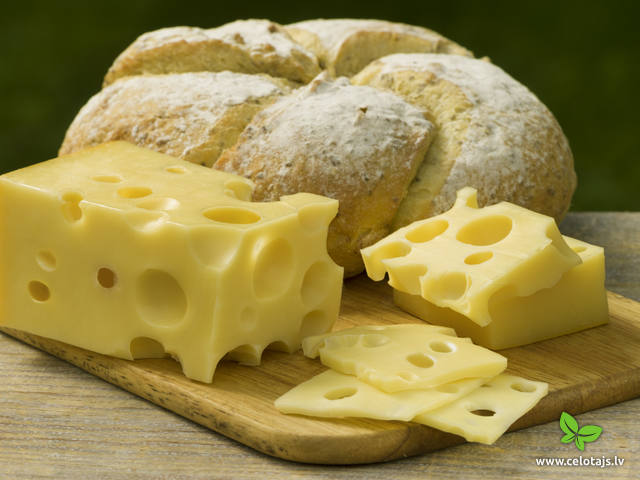
Smiltene MAAZDAMER
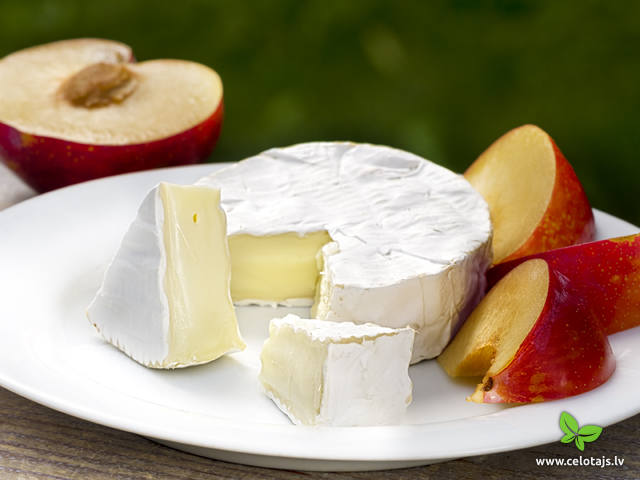
Camambert
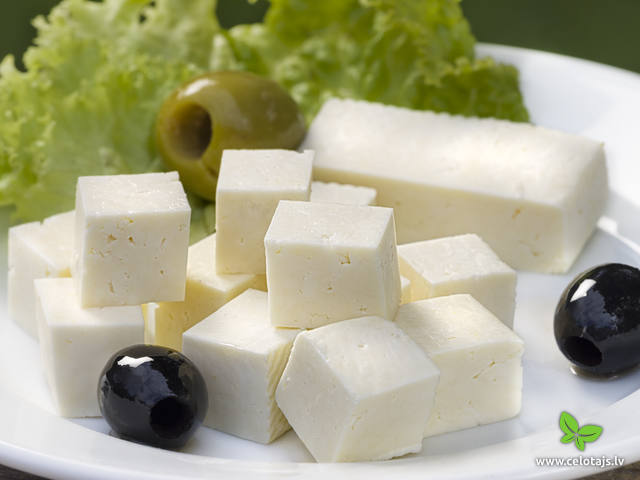
Bryndza
Fat content
There are the following groups of cheeses:
- A lot of fat – more than 60%;
- Fatty cheeses with fat between 45 and 60%;
- Medium-fatty cheeses with reduced fat between 25 and 45%;
- Cheeses with reduced fat between 10 and 25%;
- Lean cheeses with less than 10% fat.
Stores are required to indicate the total amount of fat, as well as fat per 100 g. Which number is important? The latter one, because people who watch their weight want to keep track of how much fat they consume. To a certain extent, it can be said that cheese with more fat is tastier, because it has a lighter consistency, stronger aroma and more distinct taste.
Talsu 48%
Birznieku kazas 27%
Degoles 20%
Pakalniesi
The coagulation process
Sour milk cheeses
These are cheeses that are made of pressed cottage cheese. Sour milk cheese means coagulating milk with a lactic acid bacterium with the help of acid that comes from lactose. These include Summer Solstice and caraway seed cheese, “Līgo” cheese and “White Cottage Cheese” cheese.
Sweet milk cheeses
In this case milk is coagulated with special fermentation. These include “Smiltene MAAZDAMER,” Russian, Ugliča, Holland and Rīga cheese, “Jaunpils Zelta,” “Olimps,” “Diplomāts,” “Spēkavīrs,” “Pavasaris,” “Bauskas,” Talsi Rolls, “Talsi Cheese of Nine Hills,” etc.
Summer Solstice
Green cheese
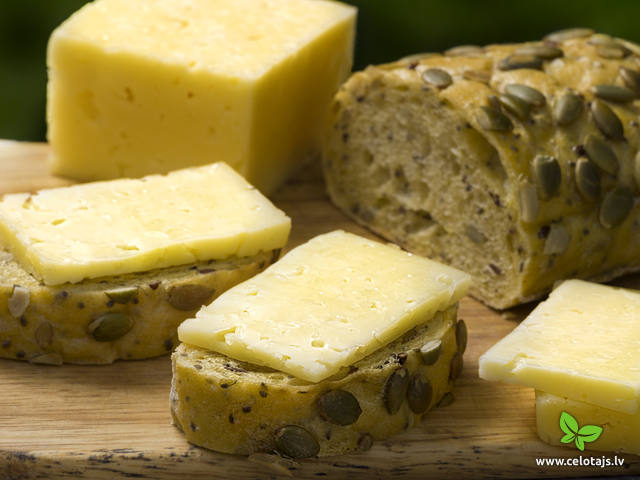
Russian cheese
Limbazu cheese
Water content
Cheeses are divided up into four groups depending on moisture, because the amount of water in cheese has the most important effect on its consistency.
Soft cheese has non-fat moisture above 67%. There are lots of cheeses in Latvia, including four types of Kazdanga cheese, 10 types of Muiža cheese, “Taizelis,” caraway seed cheese, “White Cottage Cheese” cheese, Mālpils cheese, Mālpils cheese with caraway seeds or herbs, Latvijas cheese, Bakšteinas cheese, camembert, “Mare,” etc. These cheeses have various levels of fat content, different ripening periods, and different technological techniques that provide each cheese with its special taste, aroma and consistency. Soft cheese is very popular and can be seen as a delicacy. Many poets have written that soft cheese leads to the most unusual emotions.
Soft cheeses are usually small so that the microflora that develops on their surface can quickly cover the entire mass of the cheese. Soft cheeses are a good way of encouraging hunger before lunch and can also be eaten for breakfast. They taste very good together with wine and beer. Soft cheeses have more fat, dissolving proteins and vitamins than hard cheeses do.
Semi-hard cheeses have a non-fat moisture level between 54 and 69%. The most popular ones are Russian cheese, Holland cheese, Jaunpils “Gold,” “Bauskas” cheese, “Olimps” cheese, Talsi cheese, Talsi rolled cheese, “Bingo” cheese, Ugliča cheese, Smiltene MAAZDAMER, etc. The moisture level is between 43 and 45% or more. Semi-hard cheeses are tasty, with a plastic consistency and no saltiness.
Hard cheeses have non-fat moisture between 49 and 56%. There are few hard cheeses in Latvia apart from “Grande Duro” and Cheddar cheese. The production of hard cheeses is much different than that of sweet milk-based cheeses, and they are a bit sour and spicy, with no holes and a plastic and crumbly texture.
Very hard cheeses are popular in the world, with non-fat moisture below 51%. They are hard to cut with a knife and so are usually chopped up or crumbled.
Soft cheese
Semi hard cheese
Hard cheese
Special kinds of cheeses
Smoked cheeses
Various kinds of finished and fresh cheeses can be smoked. They are quite spicy and salty and taste good with beer. Smoked cheeses come from The Mālpils dairy and the Jaunpils dairy and include smoked Mālpils cheese, “Cheese Strings,” “Rafter’s cheese,” cheese sticks, “Suluguni,” “Mozzarella,” “Hunter’s cheese, etc.
Melted cheese
Melted cheese is a dairy product that involves one or more types of cheeses being ground up, mixed up, melted and emulsified. The emulsions can be combined with dairy products such as cream or butter, oil, or other ingredients. Melted cheese has been present in Latvia for decades and is produced by the Smiltene dairy, Rīga dairy and others.
Heated cheeses
Heated cheeses undergo additional thermic processing. This can involve ripened and non-ripened cheeses.
Cream cheese
The history of cream cheese is ancient, but it has been manufactured in Latvia just for a few years, thus becoming the latest group of cheeses. People know them as sandwich or cake cheeses. Cream cheese is made of cottage cheese, milk, cream and butter, as well as additives such as dried meat, fish, vegetables, fruit, herbs, etc. Flavoured cream cheese can be spicy or sweet. Classical cream cheese without any additives is used extensively by bakers. It is manufactured by the Rīga dairy, Smiltene dairy and Tukums dairy.
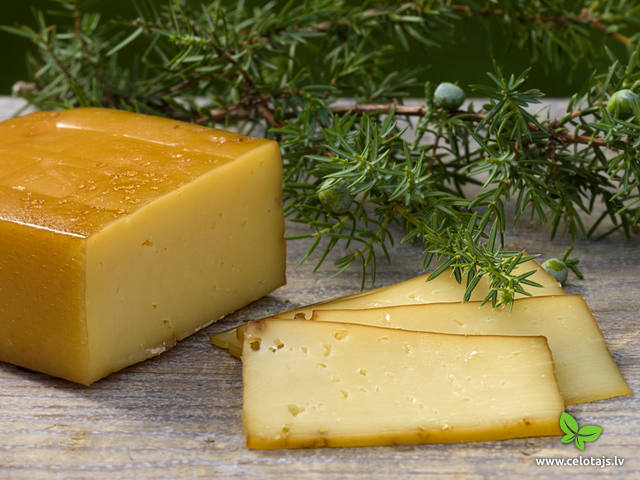
Smoked cheese
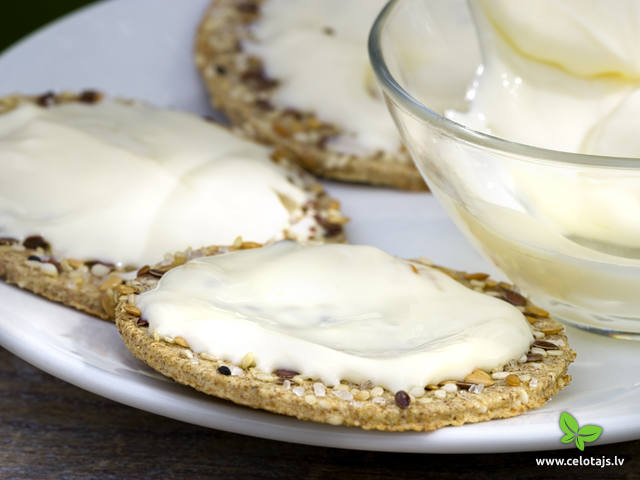
Processed cheese
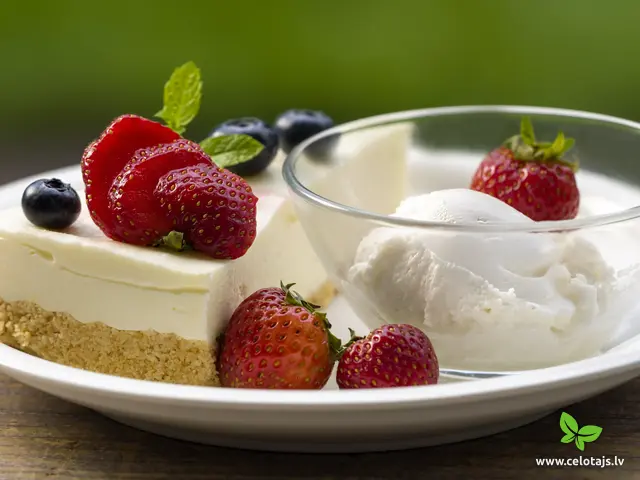
Cream cheese
The information is prepared in cooperation with "Latvijas siera klubs".
